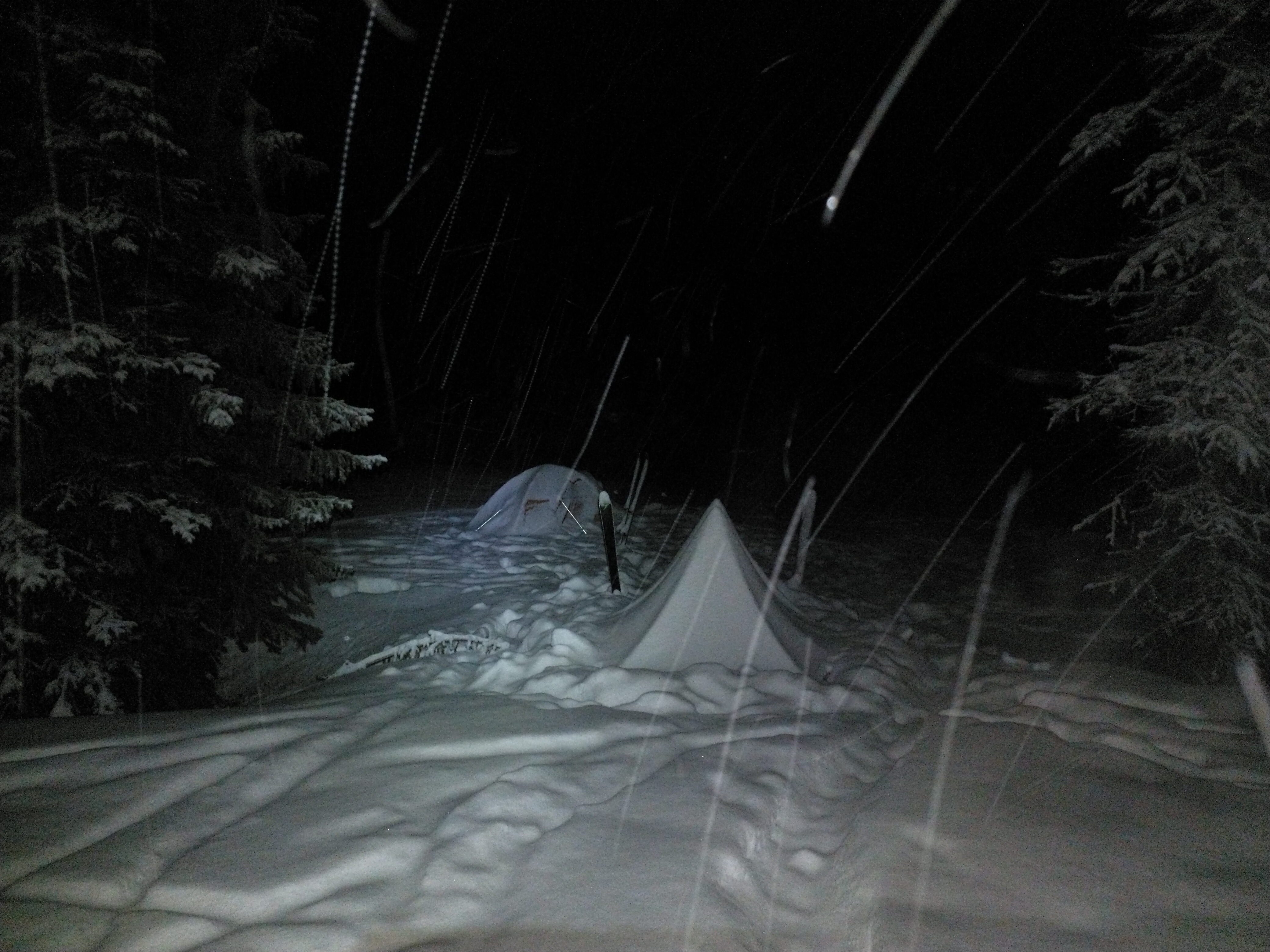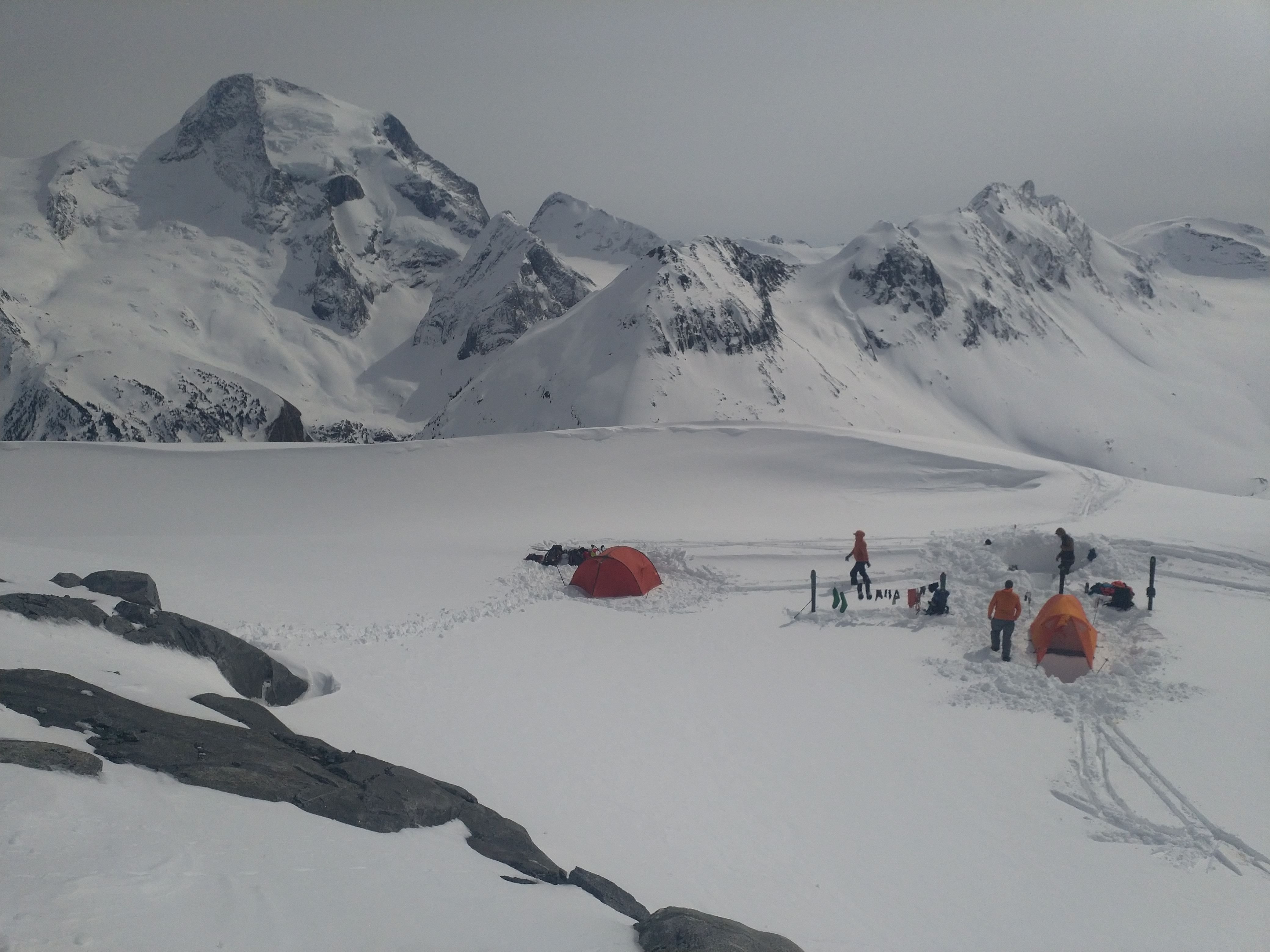Just got back from a Northern Selkirks Traverse. We skiied from the southern tip of the Esplanade Range to Fairy Meadows, via Sorceror Lodge. Along much of the route it is still winter over 2000m, however below that there is a very broad mix of conditions. Travel (especially uphill travel, and especially on solar aspects) below 1500m is quickly becoming tricky either with time of day, or with rapidly melting snowpack. As of the 21st there was still enough snow to climb out of Bachelor creek, but that is changing fast.
We were tent-bound for 2 storms on the 18th and19th and then again on the 22nd and 23rd. The first storm delivered almost 40cm to the Sorcerer area above 2200m and resulted in a very large avalanche cycle to size 3.5 on all aspects. The second delivered another 40cm to the Moberly/Sir Sanford area above 2300m but didn't result in a large cycle, and seemed to stabilize quickly with clear skies and cold temps overnight on the 24th. We weren't concerned with persistent snowpack weaknesses on our route, and were primarily concerned with new storm and windslab problems.
Of note along this route is the loss of glacier ice. There are several places where the most current paper maps available show far more glacier ice than still exists. This is to be expected, however in some cases there were around a hundred meters of vertical ice thickness "missing" making route decisions more complicated.
Places of note were:
- crossing the ridgeline between Cherub and Seraph, required travel up a corniced ridge
- the Goat Glacier at Sir Sanford Pass, options were a crevassed ramp, and a steeper, avalanche exposed slope to climb onto the glacier toe, both starting at 2350m
- Azimuth Notch, where the NE side of the notch again required travel on a sharp corniced ridge and is exited via a steep slope.
Also, since it is the time of year where people start to think of big objectives, attached is a photo of Sir Sanford and the hourglass route, just in case you were thinking of going that way. Highlighted are the very large crown that went to glacier ice in the top of the route, and then the two very distinct, but camera shy, saggy crevasses that were visible from across the valley.



